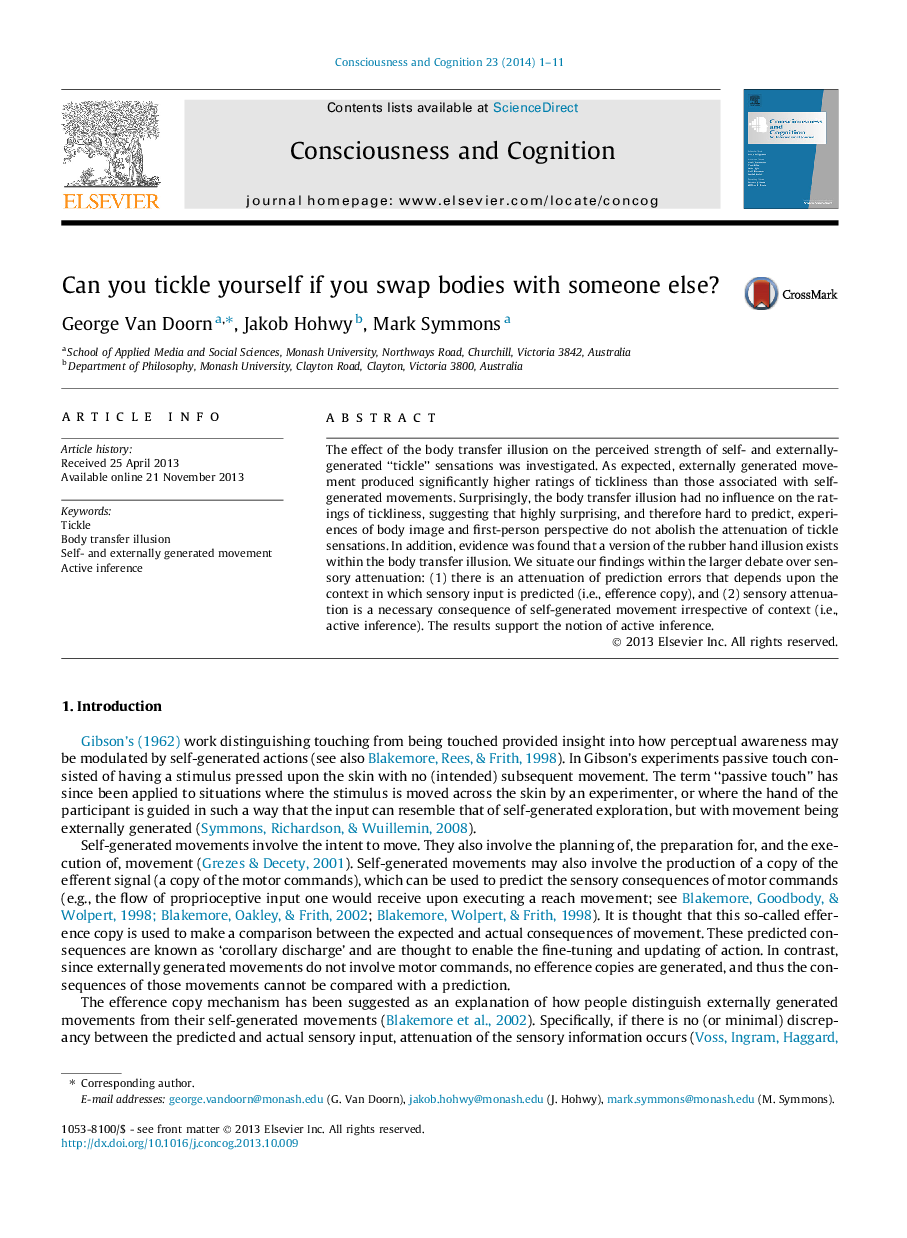| Article ID | Journal | Published Year | Pages | File Type |
|---|---|---|---|---|
| 927590 | Consciousness and Cognition | 2014 | 11 Pages |
•Tickle ratings were lower for active relative to passive movements, even during BTI.•Self-tickle is robust across surprise and diminished predictability conditions.•The context-insensitivity of the attenuation supports active inference.•Evidence was found showing a version of the RHI exists within the BTI.
The effect of the body transfer illusion on the perceived strength of self- and externally-generated “tickle” sensations was investigated. As expected, externally generated movement produced significantly higher ratings of tickliness than those associated with self-generated movements. Surprisingly, the body transfer illusion had no influence on the ratings of tickliness, suggesting that highly surprising, and therefore hard to predict, experiences of body image and first-person perspective do not abolish the attenuation of tickle sensations. In addition, evidence was found that a version of the rubber hand illusion exists within the body transfer illusion. We situate our findings within the larger debate over sensory attenuation: (1) there is an attenuation of prediction errors that depends upon the context in which sensory input is predicted (i.e., efference copy), and (2) sensory attenuation is a necessary consequence of self-generated movement irrespective of context (i.e., active inference). The results support the notion of active inference.
